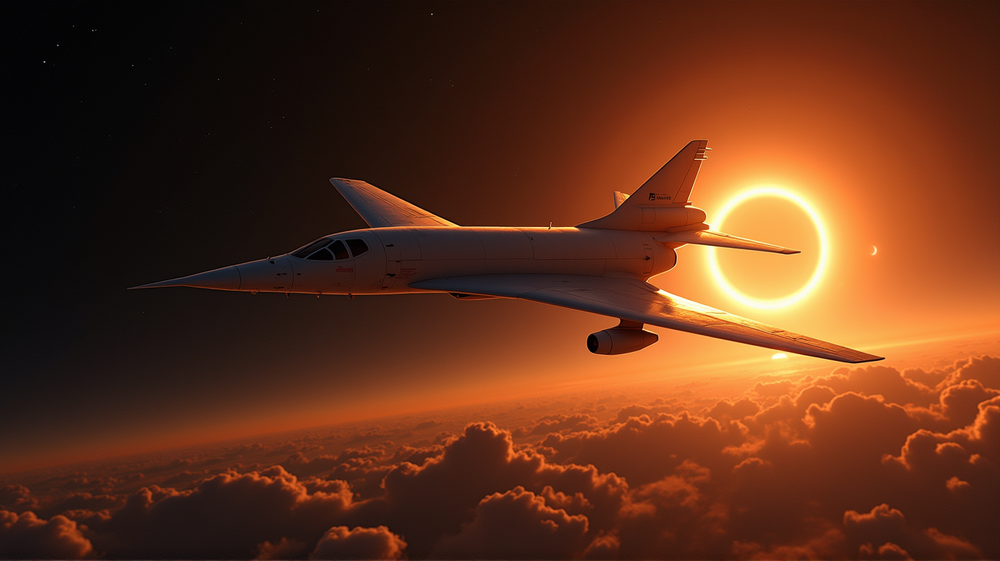In the annals of astronomical achievement, June 30, 1973, stands out as a day when human ingenuity transcended earthly limitations. High above the arid expanses of the Sahara Desert, an elite team of scientists aboard the Concorde 001 rewrote history by prolonging a cosmic ballet that spanned 74 minutes—far beyond the ordinary limits dictated by nature.
A Supersonic Chase Across the Sky
This remarkable feat was not just a stroke of luck; it was the culmination of meticulously orchestrated planning that merged the worlds of aviation and astronomy. Concorde 001, a Mach 2.05-capable prototype, was transformed into a state-of-the-art observatory. By aligning the aircraft’s velocity with the Moon’s shadow, the mission achieved an extraordinary goal—extending totality tenfold beyond what any ground observer could fathom.
The Science Behind Chasing Shadows
Total solar eclipses offer a fleeting glimpse of the Sun’s corona and chromosphere, phenomena that hold the key to understanding solar dynamics. Normally limited to a few minutes, the duration of totality during this eclipse pushed the envelope thanks to the supersonic strides of Concorde 001. As the Moon’s shadow raced over Earth, the aircraft paced at over 2,500 km/h, breaking through time’s constraints, and granting scientists an unprecedented observational window.
Inside the Umbra: Scientific Revelations
Inside this high-speed cocoon, five scientific teams hurled themselves into the study of the sun’s enigmatic corona. Their tools—custom-fitted observation ports and sophisticated instruments—gleaned insights during the extended totality that would have been unimaginable from terra firma. The mission unveiled structural patterns and solar dynamics that shaped our understanding of the solar machinery.
The Legacy of a Pioneering Flight
The awe-inspiring Concorde mission didn’t merely break records; it shattered conventional wisdom, proving that with smart engineering and strategic determination, researchers could rewrite the playbook on transient astronomical phenomena. Donald Liebenberg, among the mission’s physicists, cherished the flight as an “unforgettable experience,” amassing more eclipse observation time than any other researcher up to that point.
Concorde’s Lasting Impact
The 1973 mission cast a long shadow over modern eclipse research. Today, aircraft like NASA’s WB-57 continue to explore this high-altitude frontier, while organizations like ESA are tuning satellites for similar feats. According to The Times of India, the Concorde demonstrated that what’s seemingly out of reach today could be within grasp tomorrow with creativity and advanced technology.
By pushing the boundaries of human imagination and technological capability, Concorde 001’s journey remains an inspiring narrative of exploration, one that invites future generations of stargazers and engineers to dare, dream, and delve into the unknown realms of our universe.












